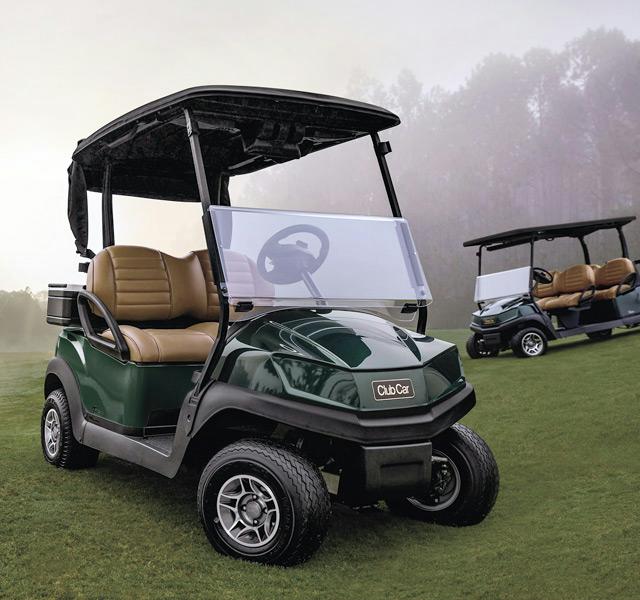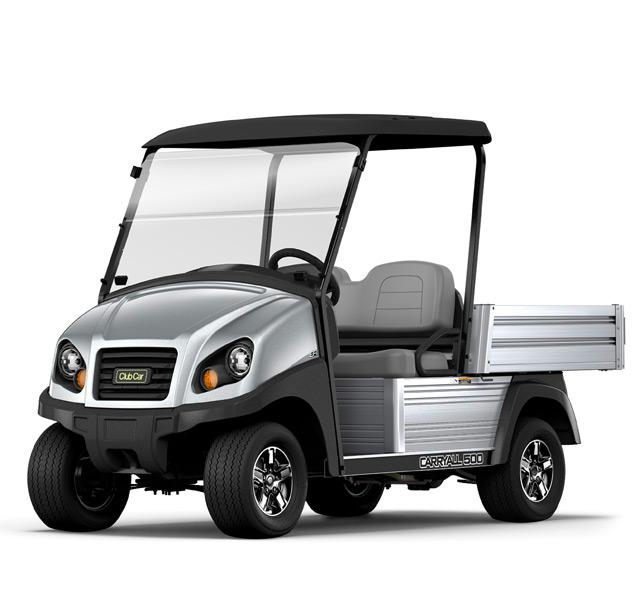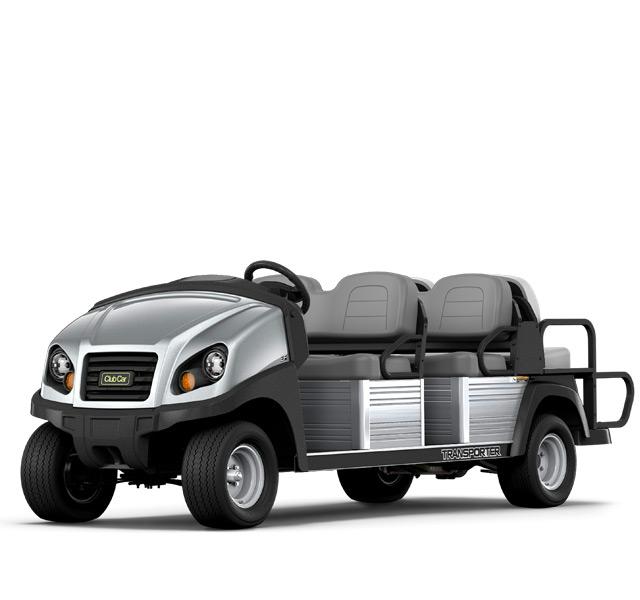For golf course superintendents and grounds managers in South-East Asia, few decisions impact daily operations more than choosing the right utility vehicle. The vehicle you select determines staff productivity in traversing acres of turf, the tools that can be transported, and even the experience you provide for golfers. With the wrong vehicle, you risk wasting time and money on an underpowered unit when you could be optimizing turf care and course management.
But with so many utility vehicle options available today offering different features and configurations, it can be challenging to select the perfect fit for your specific needs. Ultimately, there is no “one size fits all” solution. The ideal utility vehicle balances durability, cargo capacity, versatility, and cost-effectiveness specifically for your grounds. Carefully weighing your turf maintenance requirements and course layout against potential vehicle capabilities leads to informed investments that enhance productivity for years to come.
Key Considerations When Selecting a Golf Course Utility Vehicle
When examining utility vehicles for your golf course operations, start by taking a close look at the critical factors that will determine productivity, ease of use, and costs over the vehicle’s lifetime. Carefully evaluating key considerations provides insight into must-have features and allows you to select optimal vehicles for your specific needs.
Vehicle Load Capacity
The cargo and passenger capacity of a utility vehicle has significant impacts on completing daily golf course tasks. Make sure to analyze:
- Equipment hauling needs: Take measurements and weights of all the maintenance tools, attachments, containers, and other items you transport regularly. This provides a realistic load capacity target for carrying vital gear. Prioritize vehicles with adequate cargo bed size, weight ratings, trailer towing ability, and storage options to comfortably fit required equipment.
- Passenger requirements: Determine if you need to transport ground crew members or give golfers rides between holes/facilities. More seats and higher occupant weight ratings provide greater flexibility. But don’t overpay for unneeded capacity either – single bench seats might suffice for small crews.
- Materials handling: Some utility vehicles can handle over a ton of hauling weight for heavy materials like soil, gravel, or sand. Make sure to select adequate hauling capacity for any landscape supplies or course construction materials you must move regularly. Exceeding weight limits strains vehicles.
- Cargo space dimensions: Measure the size of oversized gear or accessories to ensure they fit in the cargo bed. Longer beds allow for transporting bulky aerators, sprayers, or attachments. Just remember that larger beds can restrict maneuverability on tight paths.
Accurately calculating typical load requirements avoids buying underpowered utility vehicles while also preventing overspending on excessive capacities you won’t fully utilize.
Versatility
The versatility of a utility vehicle influences how many different golf course tasks it can take on. Examine these flexibility factors:
- Terrain handling: Courses with hilly slopes, wet areas, or denser turf require more terrain capability. Seek all-wheel drive, increased ground clearance, turf-friendly tires, and advanced suspension if routinely accessing remote or challenging terrain. Don’t get stuck with 2WD when you really need 4WD.
- Customization: Look for modular accessories and reconfiguration capabilities to adapt vehicles for different jobs. For instance, swap cargo beds for flatbeds, add doors or seat configs, attach weather panels, etc. This optimizes utility by adjusting the vehicle as needs change.
- Power diversity: Gasoline engines provide a longer operational range, while electric motors offer quiet, emissions-free use. Dual gas/electric power trains give maximum flexibility to use the right engine for each task.
- Comfort: Suspension, ergonomic seats, steering assists, and climate control allow for long, comfortable work days. Test drive vehicles fully loaded to experience the ride quality.
- Accessories: Front and rear hitch receivers enable the attachment of useful accessories like spray tanks, seeders, carts, and more. This multiplies the number of specialized tasks a single utility vehicle can complete.
The goal is to select well-rounded versatility to handle the diversity of turf care, maintenance, and transportation jobs utility vehicles must tackle every day.
Durability
Utility vehicles used heavily on golf courses endure tough operating conditions on a daily basis. Seek models with maximum durability through:
- Corrosion-resistant aluminium or coated steel frames that resist rust are far better than basic steel. Withstands weathering over years of use.
- Waterproof electrical connections and seals that prevent moisture damage. Reduces electrical shorts.
- Advanced suspension systems like dual A-arms or independent rear shocks smooth out rough terrain impacts. Protects the vehicle and occupants.
- Robotically welded frames that are stronger and resist vibration stress cracks better than manual welds. Improves frame integrity.
- Rust-inhibiting treatments like powder coating or zinc undercoating protect parts against corrosion. Extends component life.
- Longer component warranties that demonstrate the manufacturer’s faith in their vehicle’s durability. Avoid skimping here.
Remember, a focus on durability lowers lifetime costs through reduced maintenance and repairs over years of operation. Paying upfront for ruggedness saves money long-term.
Affordability Factors
Of course, balance desired features and robustness with overall affordability. Carefully weigh:
- Purchase price: Set a budget target, then seek good value, but don’t sacrifice reliability solely to save money upfront.
- Safety: Rollover protection and seat belts are must-have safety investments. Don’t cut corners here.
- Fuel costs: Electric models provide lower operating costs, while gas engines enable longer range. Choose what best fits your needs.
- Maintenance: Simpler beltless transmissions and gear-driven designs require less maintenance over time than belt-driven ones.
- Warranties: Better warranties greatly reduce future repair bills for covered components. They demonstrate faith in reliability.
- Resale value: Well-designed vehicles hold higher resale value after years of use. This offsets replacement costs later.
Making sound compromises between performance and affordability leads to the best long-term utility vehicle value for golf operations.
Utility Vehicle Types for Golf Courses
With the diversity of transportation needs at golf courses, various utility vehicle configurations suit different roles. Carefully considering your requirements allows selecting optimized models.
Small Utility Vehicles
Compact 2-4 person vehicles with cargo capacities of up to 1,000 pounds efficiently transport small crews and light gear. Their nimble size provides advantages:
- Maneuver tight paths between trees, bunkers, and other course features that larger vehicles can’t access.
- Perform precision turf care tasks using specialized attachments for mowing, aerating, spraying, and more.
- Provide quiet, eco-friendly guest transportation without disrupting play.
- Lower purchase and operating costs for small operations with minimal transportation needs.
Limitations include lesser hauling capabilities and the inability to transport heavy equipment. Small utility vehicles work best for basic transportation and turf care rather than demanding material handling duties.
The Tempo 2-Seater Electric is an efficient, comfortable vehicle optimized for tight golf courses.
- Its compact size efficiently navigates tight spaces between course hazards and landscape features.
- Advanced engineering provides smooth, reliable electric operation with zero emissions.
- Ergonomic seating keeps staff comfortable for entire work shifts.
- Fleet monitoring technology enables real-time tracking and control.
With its versatility, eco-friendly electric power, and smart technology, the Tempo Walk is ideal for tight golf courses needing a nimble, long-lasting utility vehicle.
Full-Size Utility Vehicles
Bigger 4-6 passenger vehicles with 1,500-2,000 pound capacity handle demanding equipment and cargo hauling duties across expansive courses. Benefits include:
- Transport heavy maintenance gear like aerators, sprayers, or work platforms.
- Combine passenger and cargo-carrying abilities in one versatile vehicle.
- Tow multiple carts or attachments using rear hitch receivers.
- Choose between quiet electric power or gas engines for a longer range.
- Utilize accessories like armored cabs, turf-friendly tires, and more.
Their expanded capabilities make full-size utility vehicles suitable as maintenance workhorses for hauling and transport.
The Carryall 500 offers excellent durability, customization, and well-rounded performance.
- Its 1,500-pound capacity and compact size tackle hauling needs for most golf operations.
- Rear receivers allow hitching carts, aerators, seeders, sweepers, and other attachments.
- Optional doors, roof, and bed liners provide weather protection for occupants and cargo.
- Available in gas or electric models to meet course requirements.
Moreover, the Tempo 2+2 provides a versatile 4-seat configuration with cargo flexibility using the brand’s proven engineering.
- The rear seat easily converts into expanded cargo space when needed.
- Its compact frame allows accessing tight spaces while providing ample capacity.
- Advanced suspension ensures a smooth ride across varying turf conditions and terrain.
- Gas and electric models satisfy preferences for power diversity and range.
Multi-Passenger Shuttles
Shuttles with bench seating for 6+ passengers efficiently transport large groups of golfers or staff. Advantages include:
- Ferry multiple grounds crews across expansive courses.
- Provide continuous guest shuttle service between holes, facilities, and resorts.
- Combine passenger and smaller cargo areas into one vehicle.
- Cost less than full-sized vans while carrying more people.
The only downside is reduced per-vehicle cargo capacity compared to dedicated utility beds.
The Club Car Transporter balances performance, practicality, and cost-effectiveness for group transit needs.
- Available in gas or electric models to meet efficiency or range requirements.
- Onboard charging system with a retractable cord simplifies charging logistics.
- Its rustproof aircraft-grade aluminum frame and stainless hardware provide durability.
- Optional cargo boxes and kits add hauling flexibility to its 6-person capacity.
Selecting the right class and size of utility vehicle optimized for your unique golf course duties ensures maximum productivity.
Key Comparisons Between Utility Vehicle Models
While many factors influence utility vehicle selection, weighing a few key differences helps narrow the options.
Gas vs Electric Engines
Gasoline engines provide longer driving range but produce fumes and noise pollution. Electric vehicles are clean and quiet but limited in range. Compromise options include:
- Gas vehicles with electric bed lifts to reduce emissions.
- Hybrid models switching between gas and electric.
- Electric vehicles with swappable batteries to extend range.
- Vehicles with both gas and electric power trains for maximum flexibility.
Evaluate fuel efficiency, environmental goals, and operational range needs – there are excellent options for both.
Cargo Box vs Flat Bed
Cargo boxes enable the secure hauling of loose materials but limit oversized cargo capacity. Flatbeds provide open space yet require tie-downs and allow spills. Solutions include:
- Cargo boxes with folding sides to enable longer items.
- Flatbeds with cargo box inserts for containing materials.
- Hybrid flatbed designs with smaller cargo boxes built in.
Match the bed configuration to your common load types for optimal efficiency.
2WD vs 4WD/AWD
Two-wheel drive (2WD) vehicles excel on flat, manicured turf with good traction. Four-wheel (4WD) or all-wheel drive (AWD) improves traction in wet conditions, uneven terrain, hills, and denser grass. Consider:
- 2WD for basic transport across flat, accessible areas.
- 4WD/AWD for groundskeepers accessing remote, uneven, or wet turf areas.
Assess your terrain and applications to determine if 4WD/AWD capabilities merit the higher costs.
By comparing key factors like these against your specific needs, you can zero in on the best utility vehicle for your golf operations.
Conclusion
Selecting the right utility vehicle requires balancing payload capacity, versatility, durability, and cost considerations against golf course requirements. Workhorse full-size vehicles excel at heavy-duty hauling, while small utility vehicles provide efficient basic transport. Electric or gas power trains supply clean, quiet efficiency or extended operational range.
Carefully assessing must-have features and comparing options ensures you choose a golf course utility vehicle with maximum functionality, productivity, and return on investment. For help selecting optimized utility vehicles for your grounds, contact the experts at Jebsen & Jessen to discuss custom solutions tailored to your operations. Investing in the ideal utility vehicles pays dividends for years through superior turf management and service.




